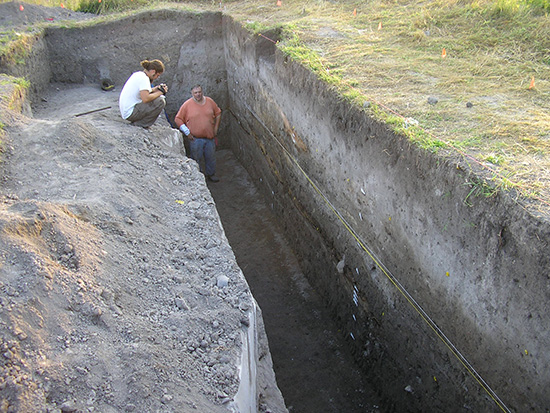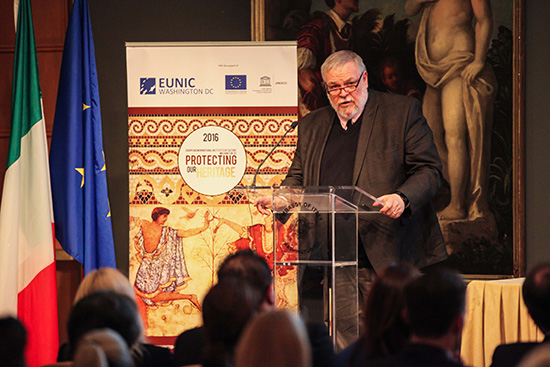 Alex W. Barker (PhD University of Michigan 1999) will start as the Director of the Arkansas Archaeological Survey on 1 January 2022. He succeeds the irreplaceable longtime director and ARAS station archaeologist Dr. George Sabo III. Barker plans to continue building the national and international stature of the Survey as a world-class cultural heritage institution.
Alex W. Barker (PhD University of Michigan 1999) will start as the Director of the Arkansas Archaeological Survey on 1 January 2022. He succeeds the irreplaceable longtime director and ARAS station archaeologist Dr. George Sabo III. Barker plans to continue building the national and international stature of the Survey as a world-class cultural heritage institution.
Barker is a Michigan-trained anthropological archaeologist whose doctoral research focused on Coles Creek-era polities just across the border in northeastern Louisiana. His dissertation, “Chiefdoms and the Economics of Perversity,” compared prehistoric settlement sizes by period relative to their catchment productivity to model changing rates of mobilized resources moving through a prestate political economy; the work received the 2000 Society for American Archaeology Dissertation Award.
He received his undergraduate degree from Marquette, a Jesuit university in Milwaukee, and earned a masters at Wichita State University with a thesis examining the increasing complexity of ceramic design motifs (based on information density statistics) at settlements with larger numbers of face-to-face inhabitants across St Helena Phase sites in northeastern Nebraska.
Interested in archaeology from a very young age, Barker began archaeological fieldwork while in high school through the Northwestern University program at Kampsville, Illinois, including seasons at Worthy-Merrigan and Macoupin. He went on to work across the Southeast, Midwest and Plains, including two seasons at Cahokia and one season teaching high school students at Hogpen Hill, an early Moundville lower-order center, through the Alabama Museum of Natural History Expedition program.

In addition to his North American work, Barker has also conducted projects in eastern Europe (mainly at Bronze age sites in Romania and Hungary), as well as northern Greece. In 1997, Barker coordinated a National Geographic-funded visit by leading prehistorians to Monte Verde, Chile, to assess claims that the site predated Clovis occupations. The unanimous consensus that the excavators had correctly dated the human occupations at the site was widely viewed as breaking the so-called “Clovis Barrier” for human arrival in the New World. He insists, however, that his role was organizational, and he is not a specialist in the peopling of the New World. In 2002, he led a project documenting the first demonstrably Mesoamerican object from Mississippian contexts in the American midcontinent, despite the better part of two centuries of speculation on the topic, using XRF spectrometry to show that a peralkaline obsidian scraper from the Craig Mound at Spiro came from the Sierra de Pachuca source near Mexico City.
Most of Barker’s career has been spent in museums, with a focus on documenting cultural heritage and digitizing extant collections. He joined the staff of the Dallas Museum of Natural History as Curator of Archaeology before completing his dissertation, and rose to become Chief Curator and later Interim Director. He returned to his hometown of Milwaukee in 2000 to chair the Anthropology Department at the Milwaukee Public Museum, and later served as Vice President for Collections, Research and Exhibitions, before becoming Director of the Museum of Art and Archaeology at the University of Missouri in 2006. When the Director of the MU Museum of Anthropology left in 2016, he assumed those duties as well, stepping down from both positions in late 2020. At Milwaukee, he negotiated loans of Dead Sea Scroll fragments from the Israeli Antiquities Authority, as well as collecting samples for recreating the caves at Wadi Qumran as part of the accompanying exhibition, and at Missouri developed a partnership with the Capitoline Museum in Rome to study previously undocumented Roman antiquities. In a project The New York Times described as “unprecedented,” the Capitoline sent antiquities to Missouri where they were studied stylistically and chemically using XRF and Neutron Activation Analysis, imaged using high-resolution 3D scanning and characterized in accordance with applicable EU and Italian cultural metadata standards, then returned so another lot of objects could take their place.

